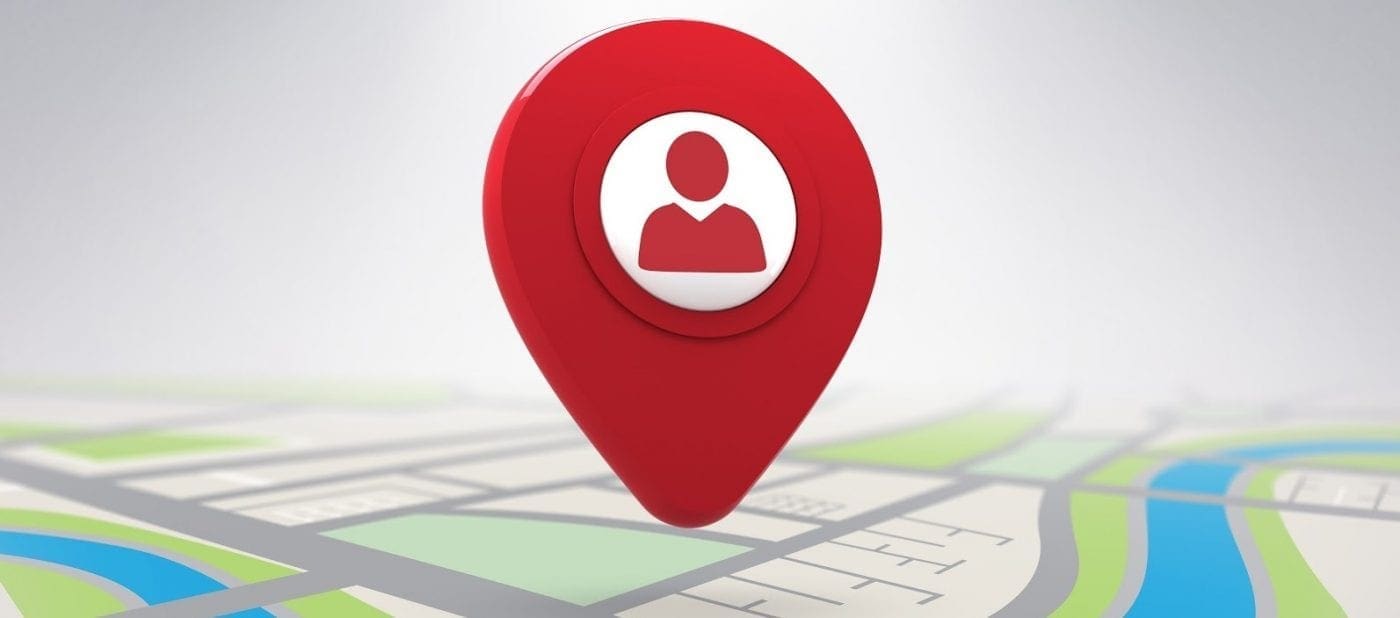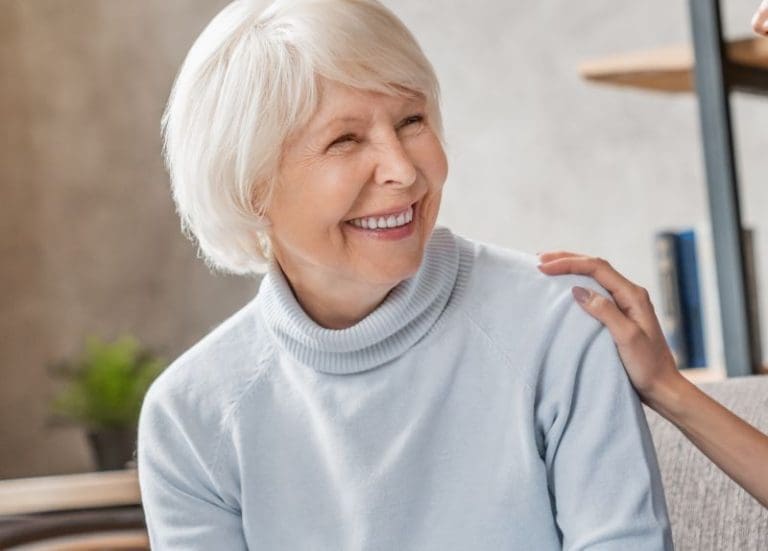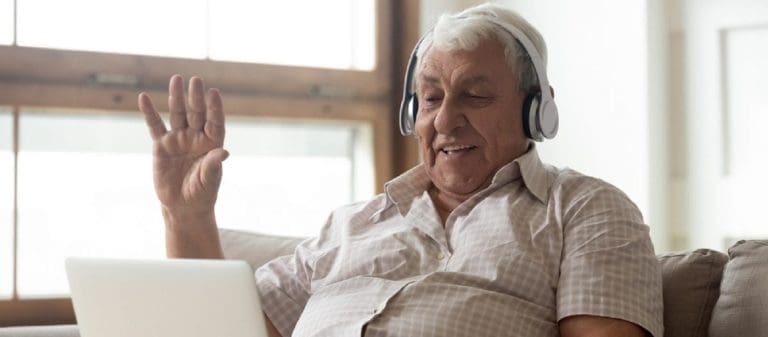Over the last two decades, geofencing technology has become increasingly popular, changing the way that many industries operate. What started as a granular, location-based marketing technology—one which relied on GPS signals and virtual boundaries to target area-specific customers—has evolved beyond its original, sales-based intent.
Since its unveiling, other industries have reimagined the potential uses for geofencing. One of the most innovative uses has been in infectious disease prevention, particularly within senior living communities.
Geofencing creates an invisible perimeter around a physical space, and signals when someone is entering or exiting a geofenced space. As such, it’s a critical tool that senior living communities can use to manage residents who shouldn’t be in the same room, provide wander detection, and combat the spread of COVID-19.
But how does it work? Let’s discuss.
What is RTLS?
To fundamentally understand geofencing, you must first begin with location-based services (LBS) and real-time location systems (RTLS).
RTLS is a type of location-based service that can identify and track the location of a person or thing in real-time. It tells you where people are, with whom, and for how long. And while it can be used in many places, it’s most effective when limited to a building or a contained area.
Modern RTLS draws on some combination of GPS, RFID, WiFi, and cellular data to create, aggregate, and filter information, and then perform certain actions based on the location of an object or user.
With RTLS, a smartphone or RFID (radio-frequency identification) tag performs constant background tracking based on real-time user geodata. It identifies a user’s physical and geographical location and then provides relevant services and functions in close proximity.
Over the last decade, there have been two primary generations of location-based services:
- LBS Generation 1 (2000-2007) – The initial release of LBS was restricted to Points of Interest services (POI). Since GPS was not yet developed enough at the time, these services relied entirely on cell-ID positioning based on cellular network infrastructure. This limited the LBS market primarily to applications like early internet restaurant finders.
- LBS Generation 2 (2007-present) – With the emergence of GPS-enabled smartphones and various technological advancements, the second generation of LBS ushered in a variety of useful features that made it possible to enable background tracking and geofencing. These advances enabled a broad range of new applications.
What is Geofencing Used For?
Geofencing has made RTLS even more effective.
This LBS triggers a pre-programmed action to occur whenever a mobile device or RFID tag enters or exits the virtual boundary. That virtual boundary, known as a geofence, is set up around a specific geographical perimeter that could be as large as a state or as small as a room. Per CIO:
“Depending on how a geofence is configured it can prompt mobile push notifications, trigger text messages or alerts, or send targeted advertisements on social media. Some geofences are set up to monitor activity in secure areas, allowing management to see alerts when anyone enters or leaves a specific area.”
Although it was originally deployed mostly for proximity-based marketing purposes, companies have since applied this technology in a variety of ways, ranging from store locators, travel information, fraud prevention, or mobile workforce management.
For senior living communities, this technology has multiple applications, from keeping residents who shouldn’t be together apart, and bringing together a resident and her walker, to ensuring that a resident doesn’t linger around an exit door.
Over the last year, senior living communities have leveraged RTLS to prevent the spread of COVID-19. Tasked with the challenge of reducing community spread, savvy providers have leaned heavily on geofencing to support their efforts.
How does it help?
There are several COVID-related applications that RTLS and geofencing can assist senior living communities with, including:
- Quarantine – Geofencing can limit access to or from a resident’s apartment. If someone attempts to enter or exit the space, the staff will receive an alert.
- PPE Reminders – Geofencing can push notifications and reminders to caregivers when they enter a specific area. For example, it can notify a caregiver to don protective gear before entering a room with a resident who tested positive for COVID or another infectious disease.
- Social distancing enforcement – Geofencing can help staff uphold social distancing requirements in a given room. By setting room occupancy limits, the technology can monitor how many residents are in space and where they are within it. If residents are too close or if the occupancy limit has been exceeded, an alert will be sent.
- Contact tracing – RTLS and geofencing can capture where people are, with whom, and for how long. This makes it much simpler to keep track of with whom an infected resident has come into contact and then identify high exposure risks.
How Does Geofencing Work?
Geofencing LBS typically begins with an application or GPS software. That software code defines the scope and range of whatever virtual perimeter you create. Many of these apps are limited to relaying specific information or performing a given command. They also require a user to opt-in to the location services in order for the application to function.
For example, if customers download a fast food app, the chain can create a geofence around their restaurants. If customers who have downloaded the app cross the boundary, it will then trigger mobile alerts.
Many geofences work according to an “if this, then that,” code command. So, in the case of a senior living community, it would function like this:
- A geofence quarantine is drawn around an infected resident’s apartment
- If the resident leaves, or if an unauthorized individual breaches the geofence…
- Then an alert would go out to nearby staff
Once the geographic area has been set, the possible uses within the senior living community are seemingly endless and can include:
- Location protocol management
- DME separation alerts
- Wander detection
Applications of RTLS
For senior living communities, RTLS has many uses aside from COVID. As McKnights notes:
“Application of this technology has expanded to include even more substantial care-related uses such as resident monitoring, safety and security measures, staff workflow applications, and time-stamped visibility and understanding of specific milestones in the care process.”
For many families, RTLS can help address one of their chief worries—that their loved one will wander off. This is of special concern for the children of residents with Alzheimer’s or other forms of dementia.
Fortunately, RTLS can help with wander detection, providing a discrete way to keep tabs on residents without invading their privacy or dignity. Should they wander off campus, into an unauthorized area, or even into a room with a resident that they don’t get along with, staff will be notified of their location.
This empowers senior living communities to better protect their residents, ease common family concerns, and ensure residents maintain their privacy and freedom of movement.
Protecting Your Community
Geofencing is one of the most important RTLS tools senior living communities have in their arsenal for ensuring the safety of residents. But to properly leverage this technology, your community will need to rely on software to accomplish this.
Ensure360SM leverages RTLS-based solutions to make it more effective and useful for residents and staff. Armed with our platform, you can:
- Establish geofences
- Set occupancy limits
- Automate contact tracing
- Define protocols for case management
- Enable wander detection
Whether it’s disease prevention or resident management, automated and integrated systems must rely on geofencing. For that, Sentrics is the solution.
Sources:
- Informatik schafft Communities. Geofencing and Background Tracking – The Next Features in LBSs. https://www.user.tu-berlin.de/komm/CD/paper/010221.pdf
- CIO. What is geofencing? Putting location to work. https://www.cio.com/article/288810/what-is-geofencing-putting-location-to-work.html
- Healthline. What Is R0? Gauging Contagious Infections. https://www.healthline.com/health/r-nought-reproduction-number
- Harvard Business Review. How Digital Contact Tracing Slowed COVID-19 in East Asia. https://hbr.org/2020/04/how-digital-contact-tracing-slowed-covid-19-in-east-asia



